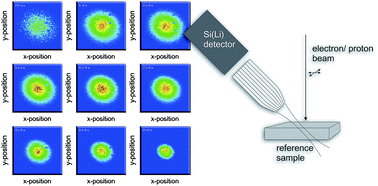Polycapillary halflenses are widely used to focus X-ray radiation onto a small spot. Additionally they can reduce the field of view of a semiconductor detector when placed in front of one. In 3D micro X-ray fluorescence spectroscopy (3D Micro-XRF) with synchrotron radiation, two polycapillary halflenses are used in a confocal geometry. Up until now, characterization measurements in the focal plane have only been performed in the case of the lens focusing parallel radiation. Assumptions have been made, that in the other case, when isotropic radiation from a spot source is transported to a detector, the acceptance distribution in the focal plane is also Gaussian. We performed measurements with an electron beam as well as a proton beam which confirm this assumption. In addition, a comparison between measurements in collecting and focusing mode show differences in spot size and transmission. These differences exemplify the fact that there is not one global spot size or transmission function of a polycapillary halflens. Illumination and divergence effects can alter both characteristic lens parameters.

You have access to this article
 Please wait while we load your content...
Something went wrong. Try again?
Please wait while we load your content...
Something went wrong. Try again?


 Please wait while we load your content...
Please wait while we load your content...